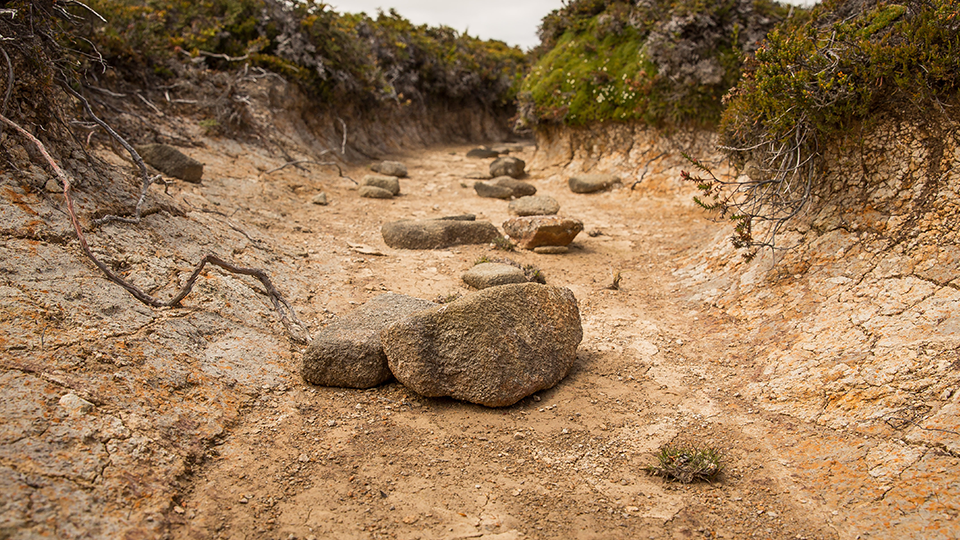
Facing future extremes: a more water-resilient Minnesota
August 2021: Nearly the entire state of Minnesota is in moderate to extreme drought, with forecasts pointing to conditions worsening for the foreseeable future. Minnesota has been trending toward more moisture in recent decades. But the dramatic intensification of extreme heat and aridity in the western U.S., driven by climate change, points to a potential future for Minnesota where the state experiences greater swings between extremes of drought and rainfall.
Flow vs. retention
Right now, Minnesota is not well equipped to handle these more intense excesses. Virtually no water flows into the state. All of the water we depend upon falls from the sky, and we have engineered our urban areas and large portions of our agricultural lands to shed excess water as quickly as possible. Less vegetation and fewer wetlands results in intense rains generating more extreme peaks in runoff that lead to flash flooding. And when droughts strike, the decline of water retention on our landscapes means less water to sustain the flow of our rivers, many of which are vital sources of municipal drinking water. So what should we do?
Stormwater: It’s complicated
In many urban areas, experts are reimagining stormwater as a resource. They’re deploying a variety of mechanisms to encourage this water to soak into the ground, rather than flow into storm sewers. Stormwater does not go to wastewater treatment plants and can become heavily contaminated with pollutants as it washes across urban surfaces, so we want to do what we can to keep it out of our lakes and rivers. This work also keeps more of this water on our landscapes, enabling it to percolate through soil and rock and help replenish our groundwater.
Agricultural areas are a more complicated story. Farmers get paid for growing commodities, not for storing water on their fields. Soggy weather means wet ground, which complicates field work and can lower yields unless excess water is drained off, either in the form of surface ditches or underground drain tiles. In times of drought, growing numbers of farmers depend on the pumping of groundwater to irrigate their crops. But less water storage and more drainage on our rural landscapes ultimately means more water flowing into streams and rivers and then leaving the state, as well as less groundwater recharge. This is a potentially untenable situation in the long run.
Reimagining our markets (and our fields)
So again, what should we do?
As a starting point, we consumers can help create markets for new perennial crops that help water infiltrate into the soil and reduce or eliminate the need for irrigation. These perennial crops have deep root systems that are able to tap into water resources that conventional crops like corn and soybeans can’t reach. Kernza™, or intermediate wheatgrass, for example, is the first commercially available perennial grain in the U.S. It produces tasty and nutritious grain, develops a deep root system that can extend ten feet into the earth, and thereby takes carbon out of the atmosphere and stores it back underground.
Right now, Kernza is being grown on only about 4,000 acres across the country (with 2,000 acres in Minnesota anticipated by the end of 2021), but it is generating a lot of interest with farmers. I participated in a heavily attended field day at A-Frame Farm in west-central Minnesota in July and personally saw and heard the curiosity. You can help to further pique farmer interest by buying Kernza products; find some options at kernza.org/consumers.
I encourage you to enjoy some Kernza beer, pancakes, or snacks as you contemplate how we can make our Minnesota landscapes more water-resilient to the climate changes already underway and prepare for more changes to come.